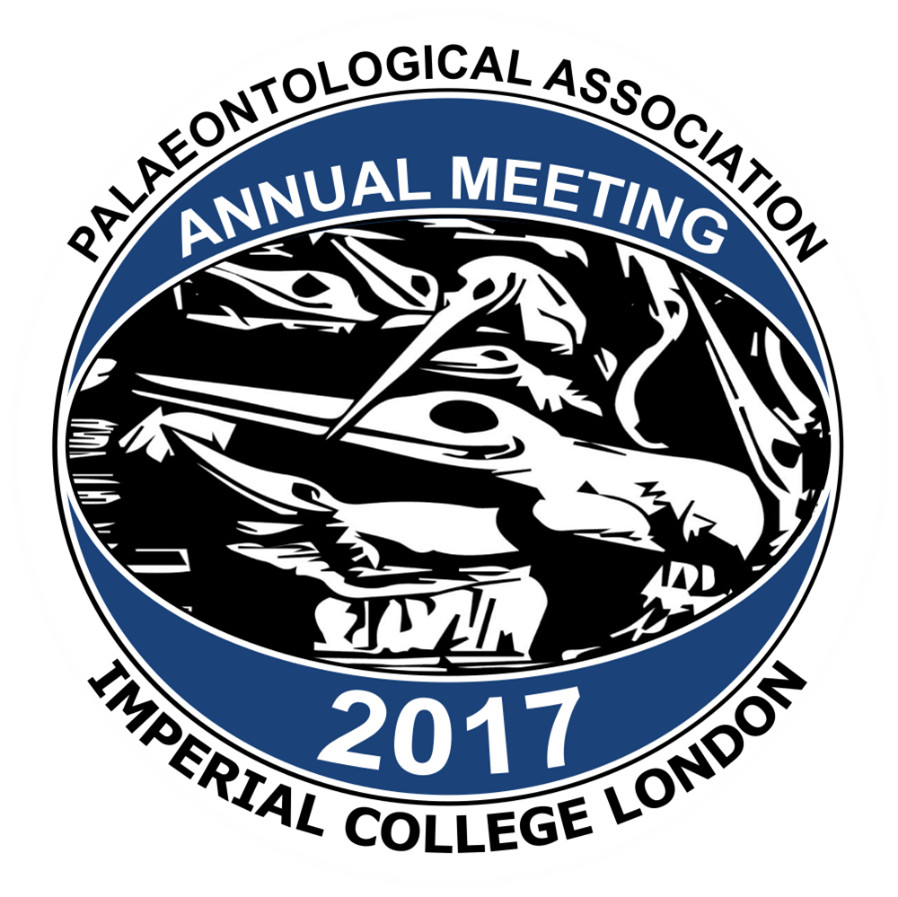The following recordings where made by PalaeoCast at the 2017 Annual Meeting.
Welcome Address
How different is reality from mathematical perfection in taxonomy?
Julia Sigwart
Using evolutionary models to assess the accuracy of phylogenies estimated with Bayesian, Maximum-Likelihood, and Parsimony methods
Mark Puttick, Joseph O’Reilly, Davide Pisani and Phil Donoghue
Simulating evolution in space and time
Russell Garwood, Mark Sutton, Chris Knight, Guillaume Gomez, and Alan Spencer
The effects of time subsample variation in disparity-through-time analysis
Natalie Cooper and Thomas Guillerme
Evolution and Earth Systems: modeling population-level processes on palaeontological scales
P. David Polly
Modelling biotic interactions using data from the fossil record
Lee Hsiang Liow
A ‘reptilian’ mode of reproduction in pterosaurs and its implications for pterosaur palaeobiology
David Unwin
Scotland’s Jurassic Park: new dinosaurs, crocodylomorphs, pterosaurs, and fishes from the Middle Jurassic of Skye
Stephen Brusatte, Thomas J. Challands, Neil D.L. Clark, Paige de Polo, Davide Foffa, Nicholas C. Fraser, Mojirayo Ogunkanmi, Elsa Panciroli, Dugald A. Ross, Stig Walsh, Mark Wilkinson and Mark T. Young
The ‘pliable’ nature of the phylogenetic relationships within early ornithopods
Daniel Madzia and Clint A. Boyd
The Middle Devonian Kačák Event: its identification and effects in Northern Spain
Alexander Askew an Charles Wellman
Climate change and rates of crocodylomorph body size evolution
Maximilian Stockdale and Michael Benton
Faunal response to sea level and environmental change in the Jurassic Sundance Seaway, western United States: a stratigraphic palaeobiological approach
Silvia Danise, Steven Holland
The ecological consequences of extinctions: from giant sharks to small mollusks
Catalina Pimiento, John Griffin, Daniele Silvestro, Alexandre Antonelli and Carlos Jaramillo
The Estuary Effect and the origin of lake faunas: critical linkages between global tectonics, sea level and biodiversity
Lisa Park Boush, Andrew Bush, Michael Hren, Gary Motz and Timothy Astrop
A minimum population extinction time driven by stochastic environmental forcing
Christopher Spalding, Charles Doering and Glenn Flier
Coupling palaeoclimate data and numerical climate models to constrain Cambrian palaeogeography
Thomas Hearing, Alexandre Pohl, Mark Williams, Thomas Harvey and Yannick Donnadieu
Carbon characterization in the Sirius Passet Biota and a geothermal gradient through Cambrian Lagerstätten
Timothy Topper, Francesco Greco, Axel Hofmann, Andrew Beeby, Zhifei Zhang and David Harper
Experimental modelling of sedimentary processes for the Burgess Shale: implications for the transport and preservation of soft-bodied organisms
Orla Bath Enright, Nic Minter, Esther Sumner, Gabriela Mángano and Luis Buatois
Dietary ecology of pterosaurs from quantitative 3D textural analysis of tooth microwear
Jordan Bestwick, David Unwin, Richard Butler, Don Henderson and Mark Purnell
Hidden diversity of small theropods from the Bathonian (Middle Jurassic) of the UK
Simon Wills, Charlie J. Underwood and Paul M. Barrett
Approaching sexual dimorphism in non-avian dinosaurs and other extinct taxa
Evan Saitta, Maximilian Stockdale, Vincent Bonhomme, Michael Benton, Nicholas Longrich, Innes Cuthill
Geobiology and palaeogenomics: genes that make rocks
David Bottjer
Reconciling the commonality of long-term stasis in the fossil record and the rare detectability of stabilizing selection in extant biota
Bert Van Bocxlaer
The “push of the past”: an important bias in the fossil record
Graham Budd and Richard Mann
Annual Address - 101 uses for a dead fish. Experimental decay, exceptional preservation, and fossils of soft bodied organisms
Professor Mark Purnell, University of Leicester
Brachiomatic: automated measurement of brachiopod size using new museum collections digitisation protocols
Rachel Belben, Kenneth Johnson, Zoë Hughes, Chris Hughes and Richard Twitchett
Accounting for differences in species frequency distributions when calculating beta diversity in the fossil record
Neil Brocklehurst, Michael Day and Jörg Fröbisch
The murky history of Cenozoic coral reefs in the Coral Triangle
Kenneth Johnson, Nadia Santodomingo and Brian Rosen
Differences in extinction rates explain contrasting regional diversity patterns in modern tropical bryozoans
Emanuela Di Martino, Jeremy B. C. Jackson, Paul D. Taylor and Kenneth G. Johnson
Species discovery and changing taxon concepts in Cenozoic molluscs – after 50+ years what does revision of a popular handbook tell us?
Jonathan Todd and Kenneth Johnson
New record of an abundant ammonite assemblage from the latest Cretaceous Corsicana Formation, Brazos River, Texas. Implications for the Cretaceous–Paleogene (K–Pg) mass extinction event in the Gulf of Mexico
James Witts, Neil Landman, Matthew Garb, Nicolas Thibault, David Jones, Ekaterina Larina and Thomas Yancey
New insights on the correlation of Permo-Triassic terrestrial faunas of South Africa with those of European Russia
Michael O. Day, Fernando Abdala, Valeriy K. Golubev, Andrey G. Sennikov and Bruce S. Rubidge
Breathing life into an extinct sea scorpion: revealing the gill structure of a three-dimensionally preserved eurypterid through MicroCT scanning
James Lamsdell, Victoria McCoy and Melanie Hopkins
The Downton Bonebed: insights into a lost world
Luke Hauser
Rotten livers, muscles and guts: controls on exceptional preservation of internal organs
Thomas Clements, Mark Purnell and Sarah Gabbott
The end-Ordovician Anji Biota (Zhejiang, China) and a wider Hirnantian sponge mega-community
Joseph Peter Botting, Lucy A. Muir, Yuandong Zhang and Wenhui Wang
Biomineralisation of Palaeozoic sponges and aragonite-calcite seas
Uwe Balthasar, S Kershaw, A.C Da Silva, B. Seuss, M. Cusack, K. Eichenseer and P. Chung
Phylogenomic analysis of Brachiopoda and Phoronida: implications for morphological evolution, biomineralization, and the Cambrian radiation
Aodhan Dermot Butler, Michael Eitel, Gert Wörheide, Sandra J. Carlson and Erik A. Sperling

